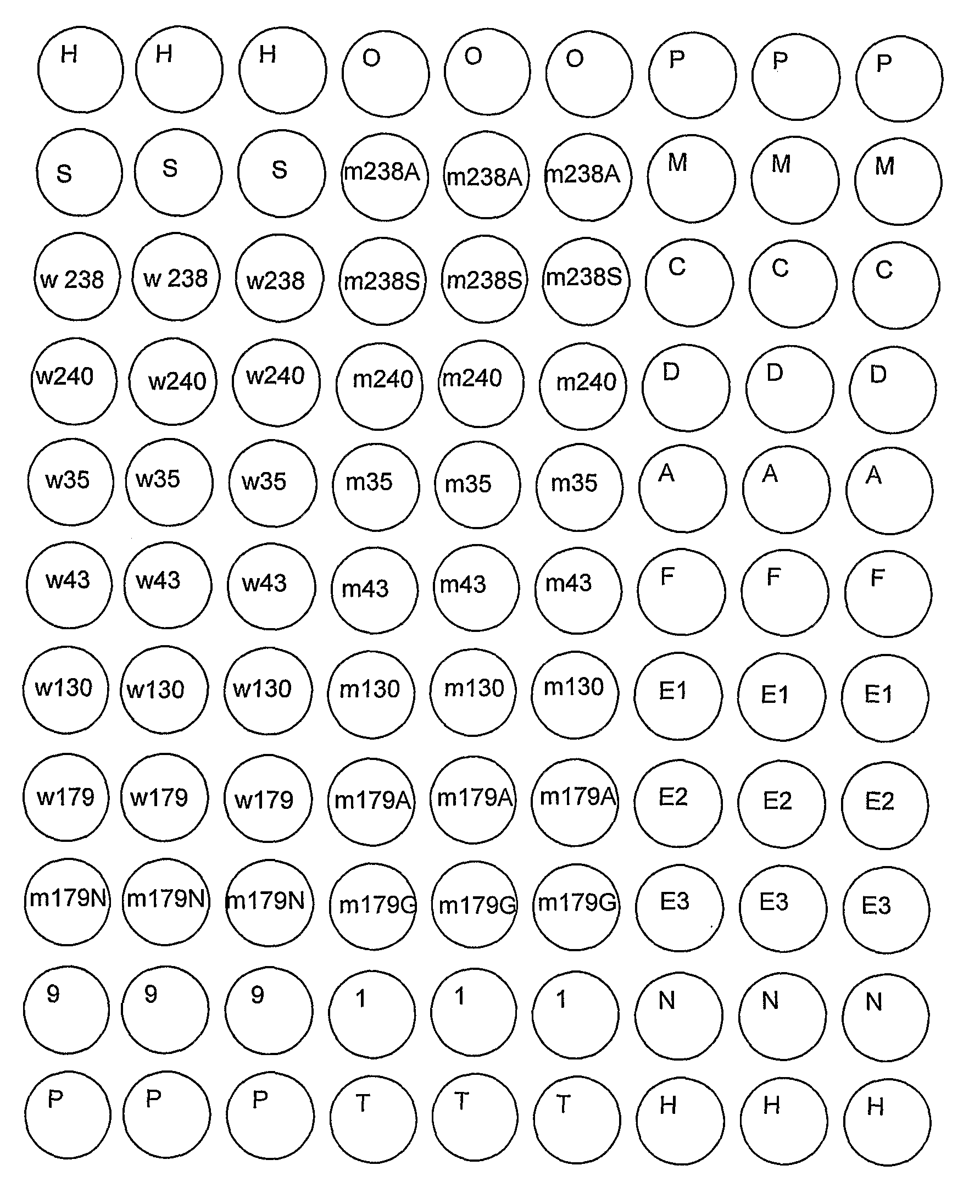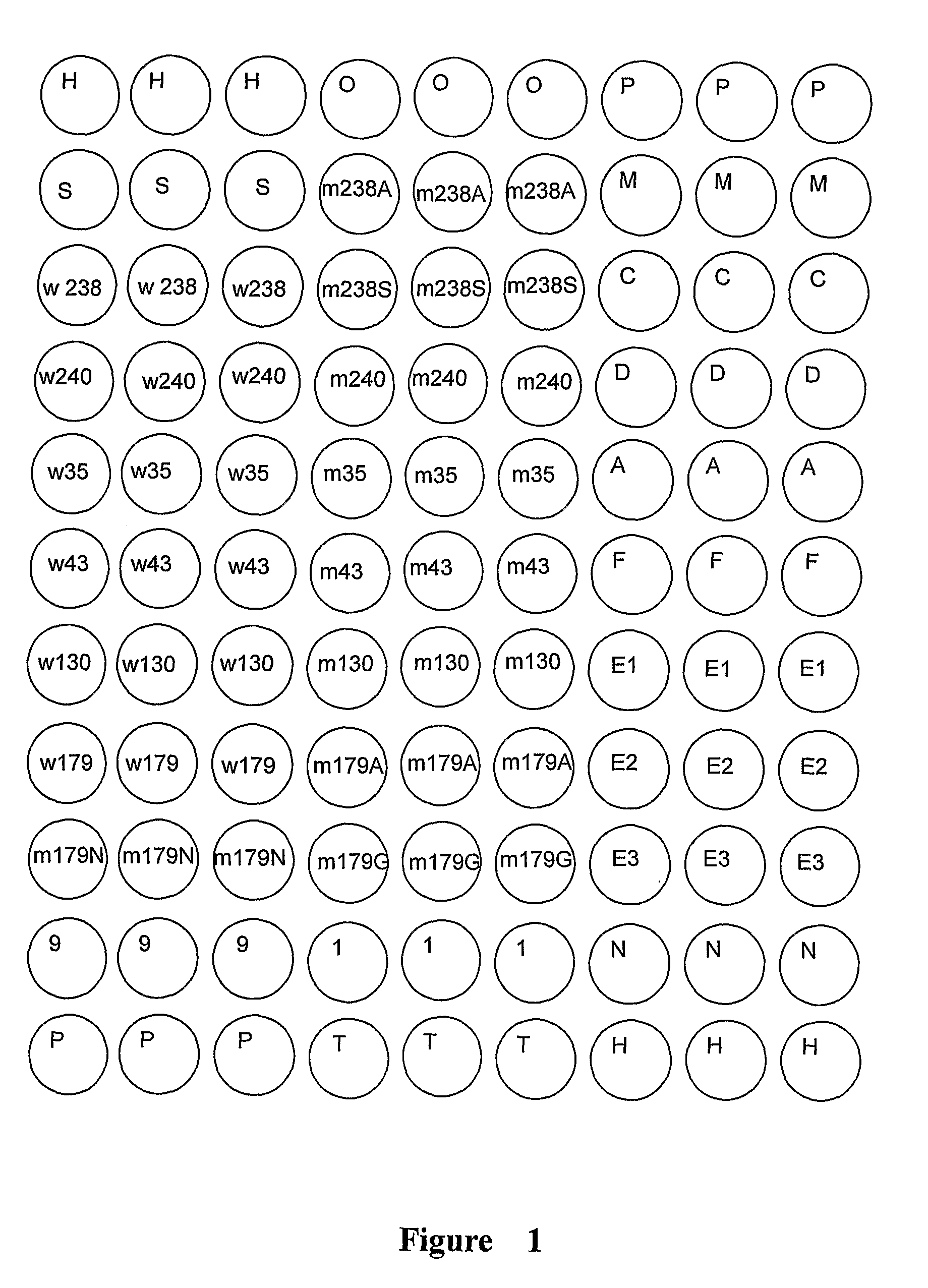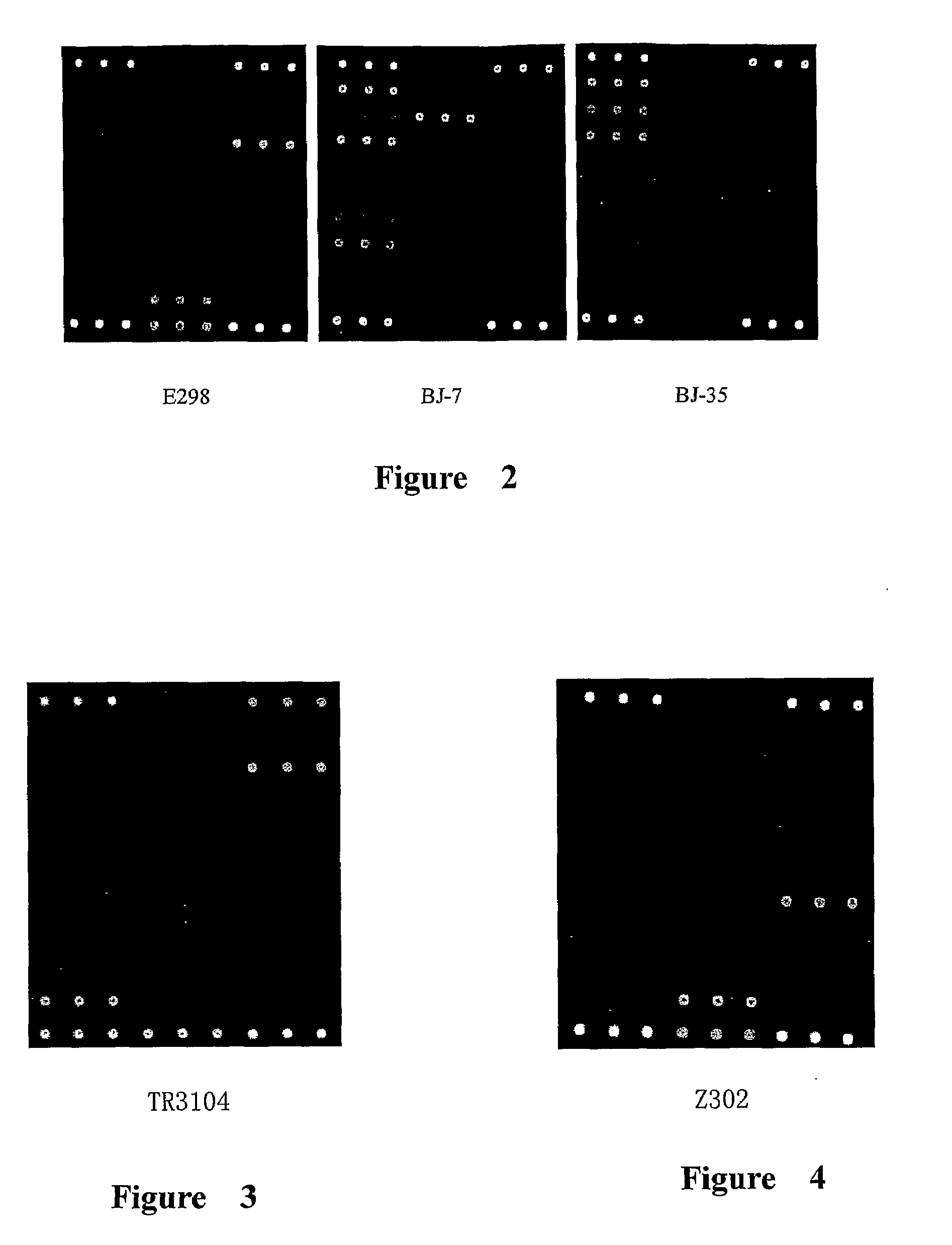Methods, microarray, and kits for detection of drug resistance genes in gram-negative bacteria
a technology of drug resistance and microarrays, applied in the field of methods for detecting drug resistance genes in gram-negative bacteria and microarrays, can solve the problems of increasing the resistance of bacteria, increasing the severity of nosocomial infection, and globalizing the treatment of infection due to resistant bacteria
- Summary
- Abstract
- Description
- Claims
- Application Information
AI Technical Summary
Benefits of technology
Problems solved by technology
Method used
Image
Examples
example 1
Detection of the Drug Resistance Genes inK. pneumoniae Using the Kit for Detection of Resistance Genes in Gram-Negative Bacteria in the Present Invention
[0132]The detection object of the present kit is to detect the resistance genes of gram-negative bacteria K. pneumoniae, comprising tem, shv, ctx-m-1-type, ctx-m-9-type, mox, cit, dha, acc, ebc and fox. The detailed information of the primers and probes are listed in Table 1 and Table 2.
[0133]The primers and probes were synthesized by BioAsia Biotechnology Company Shanghai. The TAMRA of 5′-ends of some primers and the amino group of 5′-ends of some probes were also synthesized by BioAsia Biotechnology Company Shanghai.
The Preparation of Gram-Negative Bacteria Resistance Gene Detection Microarray
[0134]The preparation of the glass slides with aldehyde group: The glass slides were dipped into the washing solution, and incubated overnight. The slides were rinsed by tap water to wash out the acidic solutions, then washed by distilled wat...
example 2
Detection of the Resistance Genes in E. coli Using the Gram-Negative Bacteria Resistance Genes Detection Kit in the Present Invention
[0147]The resistance genes in E. coli Z302 were detected using the microarray in FIG. 1 according to the method in Example 1. The results are showed in Table 6 and FIG. 3, indicating that the isolate contains tem, ctx-m-9-like and cit group of genes by detection of microarray, which is consistent with the sequencing results, showing that the isolate was resistant to the third generation cephalosporin and cefoxitin, and not inhibited by clavulanate, which is consistent with the traditional in vitro antimicrobial susceptibility results (MIC). Thus the kit for detection of resistance genes in gram-negative bacteria in the present invention can be used to specifically detect the resistance genes in the prevalent gram-negative bacteria E. coli.
TABLE 6The information of the tested strainsThe in vitro antimicrobial susceptibility test / MICa (μg / ml)Strain No.Or...
example 3
Detection of Drug Resistance Genes in E. cloacae Using the Gram-Negative Bacteria Resistance Genes Detection Kit in the Present Invention
[0148]The resistance genes in E. cloacae TR3104 were detected using the microarray in FIG. 1 according to the method in example 1. The results are showed in Table 7 and FIG. 4, indicating that the isolate contains tem, ctx-m-3-like and chromosomal ampC genes by detection of microarray, which is with the sequencing results, showing the isolate is resistant to the third generation cephalosporin and cefoxitin, which is consistent with the traditional in vitro antimicrobial susceptibility results (MIC). Thus the kit for detection of resistance genes in gram-negative bacteria in the present invention can be used to specifically detect the resistance genes in the prevalent gram-negative bacteria E. cloacae.
TABLE 7The information of the tested strainsThe in vitro antimicrobialStrainsusceptibility test / MICa (μg / ml)SequencingNo.OriginSpeciesCAZaCAZ + CLACTX...
PUM
| Property | Measurement | Unit |
|---|---|---|
| Angle | aaaaa | aaaaa |
| Fraction | aaaaa | aaaaa |
| Fraction | aaaaa | aaaaa |
Abstract
Description
Claims
Application Information
 Login to View More
Login to View More - R&D
- Intellectual Property
- Life Sciences
- Materials
- Tech Scout
- Unparalleled Data Quality
- Higher Quality Content
- 60% Fewer Hallucinations
Browse by: Latest US Patents, China's latest patents, Technical Efficacy Thesaurus, Application Domain, Technology Topic, Popular Technical Reports.
© 2025 PatSnap. All rights reserved.Legal|Privacy policy|Modern Slavery Act Transparency Statement|Sitemap|About US| Contact US: help@patsnap.com



